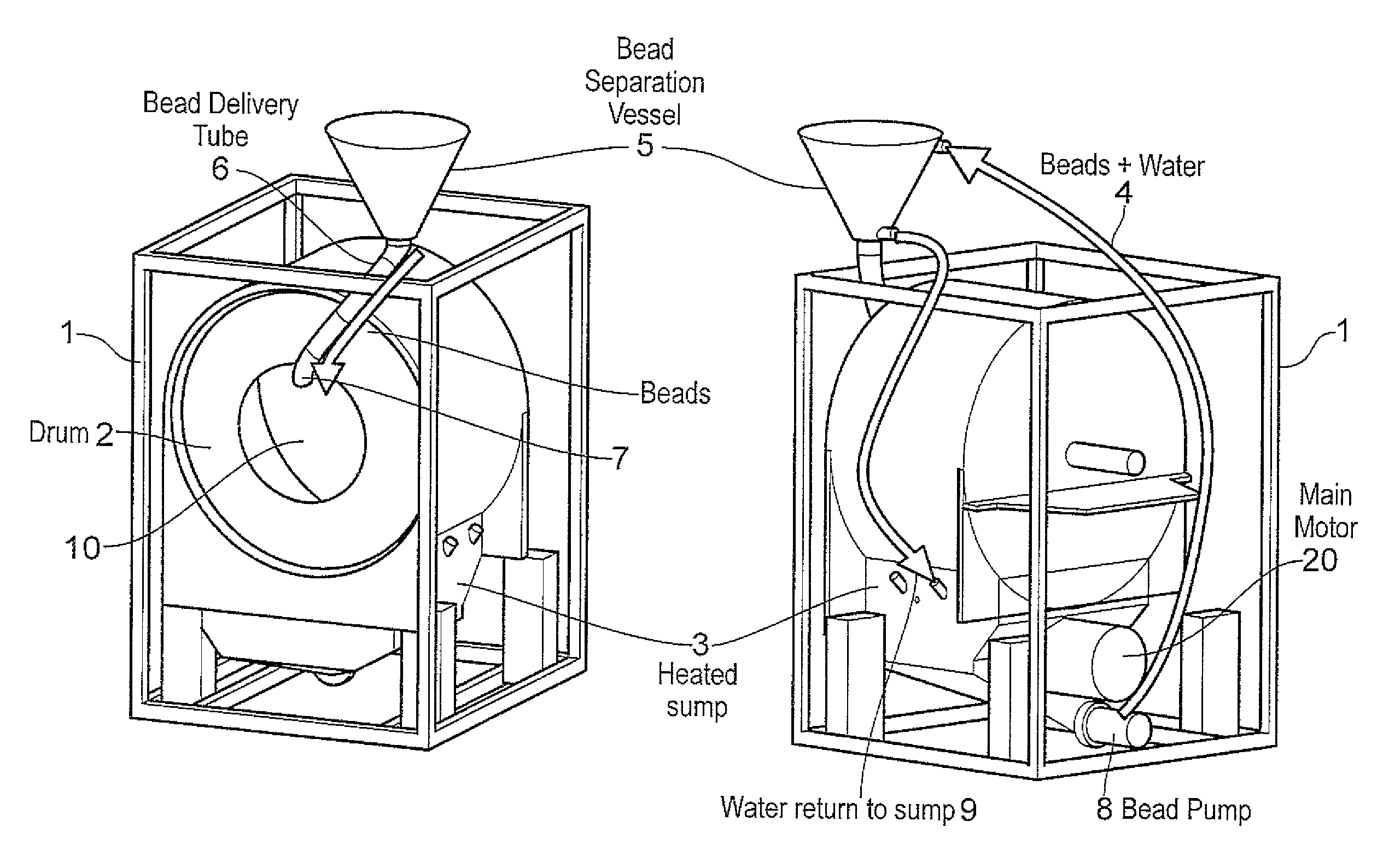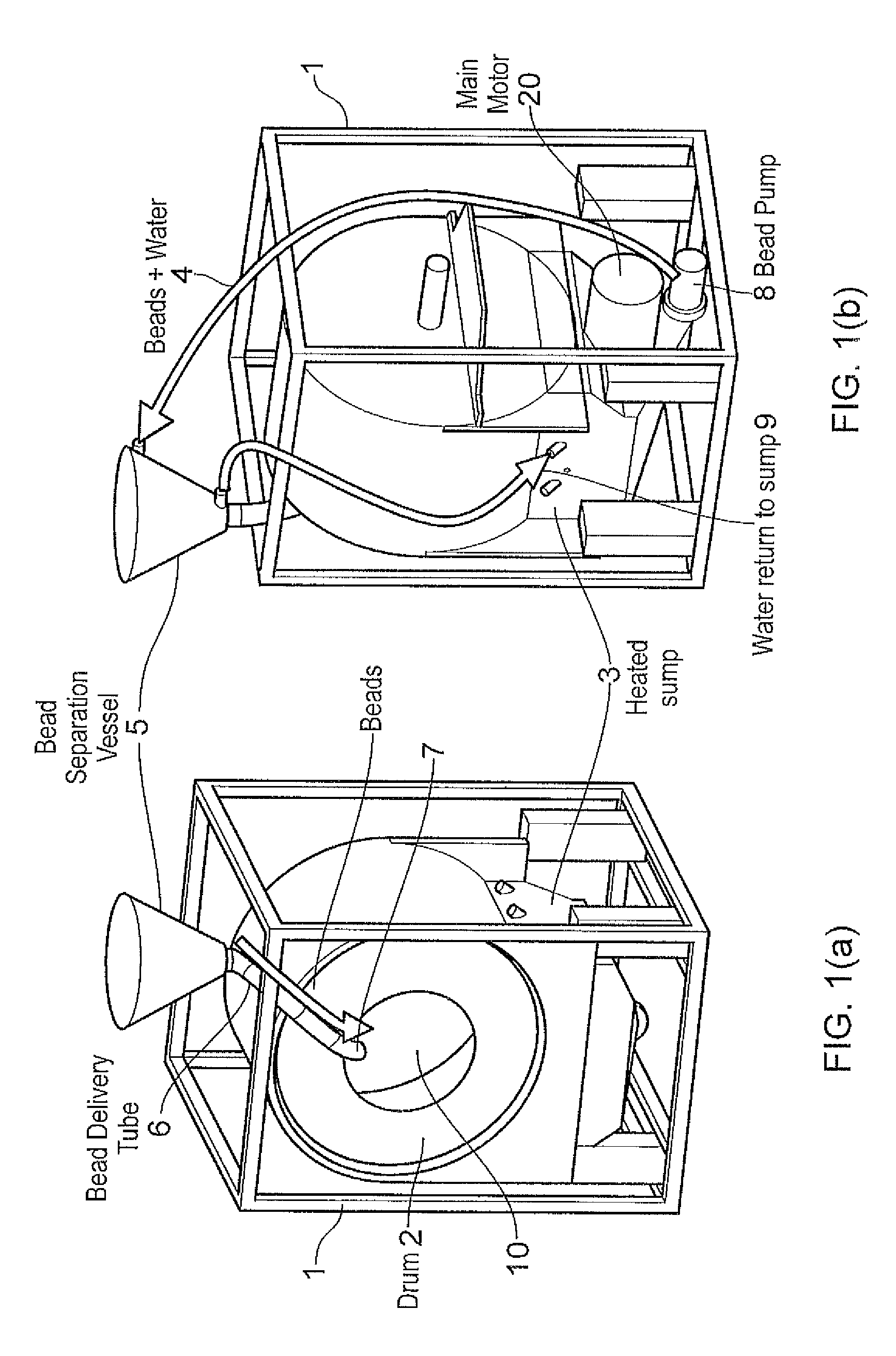Cleaning method
a technology of cleaning method and water, applied in the field of aqueous cleaning, can solve the problems of increasing the difficulty of reducing the water level (and hence energy and detergent) in a purely aqueous process, affecting and consuming more water. to achieve the effect of enhancing the appearance and other properties of the cleaned substra
- Summary
- Abstract
- Description
- Claims
- Application Information
AI Technical Summary
Benefits of technology
Problems solved by technology
Method used
Image
Examples
example
[0090]Approximately 80 kg of nylon 6,6 beads were supplied by Rhodia Operations, Aubervilliers, France—grade 24FE3. This material was divided into individual samples of approximately 20 kg, each of which was then dried for 3½% hours at 80° C. in a desiccator. The polymer beads and the appropriate amounts of a silver zeolite antimicrobial agent (Bio Gate™ BG-Tec Plus) when used, were intimately mixed by shaking them together in a sealed container, prior to extrusion using a Rondol 21 mm diameter twin screw extruder at Smithers-RAPRA, Shawbury, UK. The four samples of polymer beads produced contained 0% (as a control, comparative example), and 1.0, 1.5 and 2.0% w / w levels of the Bio Gate™ BG-Tec Plus respectively. The twin screw extruder was operated with a screw speed of 400 rpm, and with 8 sequential temperature settings down the barrel, namely: zone 1@240° C., zone 2@250° C., zone 3@260° C., zone 4@265° C., zone 5@265° C., zone 6@265° C., and zone 7@265° C. The die plate (zone 8) w...
PUM
| Property | Measurement | Unit |
|---|---|---|
| temperature | aaaaa | aaaaa |
| molecular weight | aaaaa | aaaaa |
| length | aaaaa | aaaaa |
Abstract
Description
Claims
Application Information
 Login to View More
Login to View More - R&D
- Intellectual Property
- Life Sciences
- Materials
- Tech Scout
- Unparalleled Data Quality
- Higher Quality Content
- 60% Fewer Hallucinations
Browse by: Latest US Patents, China's latest patents, Technical Efficacy Thesaurus, Application Domain, Technology Topic, Popular Technical Reports.
© 2025 PatSnap. All rights reserved.Legal|Privacy policy|Modern Slavery Act Transparency Statement|Sitemap|About US| Contact US: help@patsnap.com


